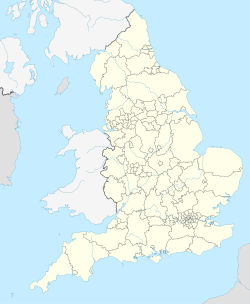| Site of Special Scientific Interest | |
 The ponds to the north of Red Moor SSSI, created from old tin mining pits | |
| Location | Cornwall |
|---|---|
| Grid reference | SX072613 |
| Coordinates | 50°25′10″N4°42′54″W / 50.4194°N 4.7151°W |
| Interest | Biological |
| Area | 89.1 hectares (0.8910 km2; 0.3440 sq mi) |
| Notification | 1979 |
| Natural England website | |
Red Moor (Cornish : Hal Gors, meaning moor of reeds) is a nature reserve and Site of Special Scientific Interest (SSSI), noted for its biological characteristics, near Lanlivery in mid Cornwall, England, UK.

